7 Tips for Taking Your Homebrewing Hobby to the Professional Level

November 1, 2021
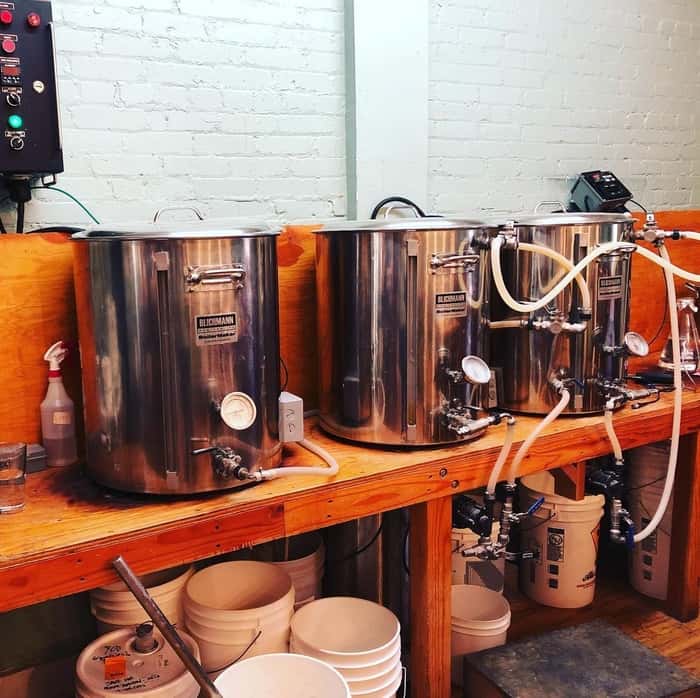
Do you dream of becoming a professional brewer? Of moving the carboys, stainless steel pots, auto-siphons, and pH meters from your garage or basement to an actual production warehouse or taproom? You’re not the first. In fact, many of the almost 9,000 breweries in the United States are owned by people who started as homebrewers and turned their hobby and passion into a professional career.
If you’re serious about going from a homebrewing hobby to professional brewing, you need to understand how to open a brewery. Here are some things to consider to help make your dream a reality.
What We’ll Cover in This Piece:
- Research Starting a Brewery. Write Down Your Idea
- Elevate Your Homebrewing Skills: Get Brewing Experience, Education, or Practice
- Professional Brewer or a Brewery Owner?
- As a Professional Brewer, Know Your Limits, Know Your Strengths
- Get Ready for the Red Tape
- Start a Brewery Instagram
- Scale Up Your Homebrewing Recipes
- Stay True to Your Brewery Brand
- A Final Word
Research Starting a Brewery. Write Down Your Idea
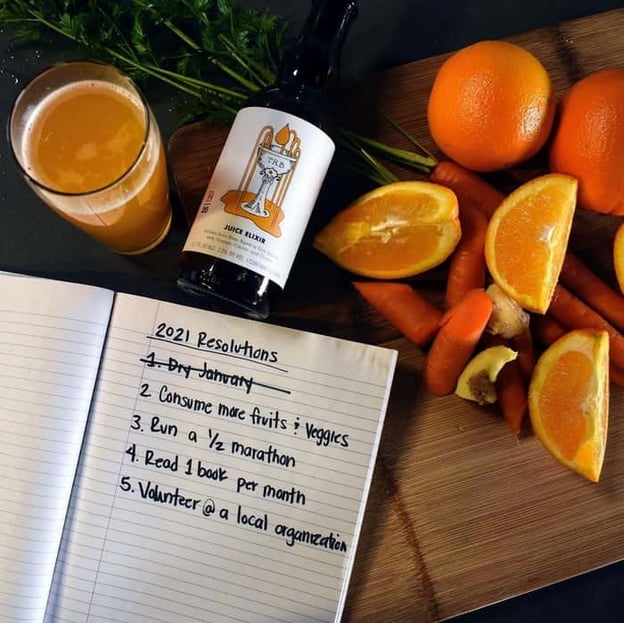
Although it seems simple, many new brewers don’t stop to write down their idea. But the concept is highly effective. Actually writing your idea down gives it validity. And lets you work out what’s possible.
Writing down their idea was the first step Alex Wallash and Jay Goodwin took when they originally had the idea for The Rare Barrel in Berkeley, CA. Homebrewers, friends, and roommates in college, Wallash and Goodwin graduated with plans to open the brewery.
“We quite naively said, ‘What do we want to do?’” says Wallash. “We like making beer and bringing people together. Let’s start a brewery. We didn’t have any money at the time. We didn't have any professional experience and we didn’t have any idea how to make good beer... All we really had was a dream.”
So the pair met up at Hollister Brewing Co. for a beer.
“We sat down, each got a pint… and wrote down everything we didn’t know how to do,” says Wallsh. “We filled up this page and then started assigning tasks to each other. We operated from that original list for a few years.”
There’s something about writing things down that organizes your thoughts, but also makes them real.
“There’s a level of commitment… When I put pen to paper, that’s one way to take something from an abstract idea to, I’m going to do this,” says Wallash.
Lockstep with putting pen to paper is doing your own research.
For Zahra Tabatabai, Founder of Back Home Beer, an Iranian- and women-owned brewery based in Brooklyn, NY, going from homebrewing to professional brewing started with a series of questions.
“What [do] I have to do in order to get this done? What kind of licenses, permits, and things are required federally and at the state level to get this done? Can I put effort into doing this on a part-time basis?” says Tabatabai. “That was the first step.”
Making a list of all your questions and to-do items is a great first step to opening a brewery.
Elevate Your Homebrewing Skills: Get Brewing Experience, Education, or Practice
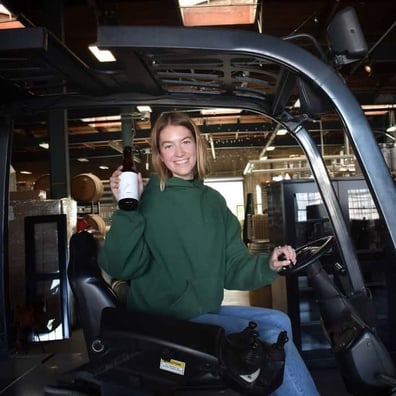
The next step to consider is getting some professional experience.
If you’re reading this, you probably know how to make tasty beer. Maybe you’ve crafted many successful homebrews or even won a few awards at local competitions. But transitioning your small homebrewing recipes to a production or commercial facility isn’t an apples-to-apples comparison.
For this reason, it might be worth getting some work in the industry. At the highest end, you could invest in brewing or fermentation programs such as the Siebel Institute of Technology or U.C. Davis Brewing Program. Many state schools also offer their own courses and programs. This is the most time-consuming and expensive option, but could pay dividends in the long run when you’re looking for investors to support your business.
If school education isn’t an option, boost your knowledge base by working at someone else’s brewery. Real world experience is invaluable. An entry-level position at any brewery will be a lot of backbreaking work -- cleaning kegs, filling kegs, hauling spent grain out of mash tuns, and working the bottling line -- but all of those tasks are important. Plus, keeping your ear to the ground will help you learn how to run a brewery business.
Jay Goodwin, Co-Founder of The Rare Barrel, ended up getting a job at The Bruery in Placentia, CA.
“He was one of their initial hires,” says Wallash. “He started off mopping the floor and worked his way up to eventually managing the barrel program when he left.”
In that position, Goodwin gained invaluable insight that translated when he opened The Rare Barrel, a primarily sour and barrel-aged focused brewery.
Plus, finding work at a brewery will help you make connections in the industry. When Wallash and Goodwin launched their side hustle Hello Friend, an IPA, pilsner, and everyday beer-focused project, they turned to friends in the industry for help developing the recipes.
Lastly, a brewery gig is a low-risk investment. In fact, you’ll probably actually be making money even if it's just a part-time job.
If getting experience isn’t in the cards, then consider bringing in someone who has that knowledge base.
“You do need some experience working in a brewery, and I didn’t have it at that point,” says Tabatabai. “I started networking and… asking for somebody that could scale what I’m doing at home.”
Through conversations, Tabatabai eventually connected with Flint Whistler, the Head Brewer at Randolph Beer. He’s been helping her fill in any gaps.
Ultimately, if you bring somebody in, it probably means you’re not the head brewer of your own establishment. But you’ll still be a brewery owner.
Professional Brewer or a Brewery Owner?
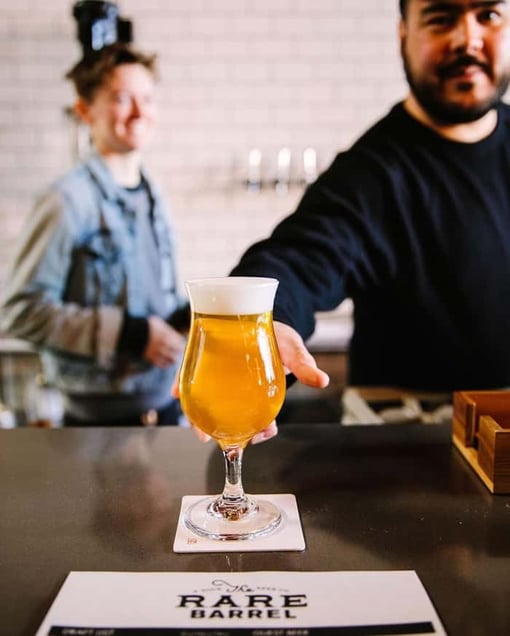
If you take one thing away from this piece, remember that opening up a brewery is more than just brewing beer. You have to be an entrepreneur and a business owner. We wrote a complete guide on starting a brewery that you can read here, but suffice it to say that running a successful brewery goes beyond just brewing beer.
Raising money for startup costs, building a brand, creating a business plan, finding a location, sourcing brewing equipment, and applying for all the necessary permits and licenses are just a few of the steps you’ll need to take.
“When you’re homebrewing, you’re just homebrewing… and that’s all you’re doing. But when you make the jump, that’s probably the thing you’re doing the least,” says Tabatabai. “Now, I’m dealing with paperwork, the SLA, the TTB, licensing, working with designers to do our labeling, compliance, a lot of reaching out to businesses, sampling, talking to people, emails.” The list goes on.
Generally, brewing great beer is just the carrot. Most likely, you’ll need to take up the stick to get your business open and set up a foundation for growth and success in the future.
Plus, once you’re open as a business owner, you’ll need to hire and manage employees, order supplies, build relationships with distributors, make sales runs, and probably twenty other things.
Essentially, you need to be a jack of all trades. And you need to be willing to learn.
“Eventually, when you start a brewery, you will find yourself doing things you’re not good at. That will happen a lot. And then a lot more. And then a lot more,” says Wallash.
If you want to go pro, just know you’ll need to be nimble, flexible, and up for anything. Which means balancing your work schedule will be key.
As a Professional Brewer, Know Your Limits, Know Your Strengths
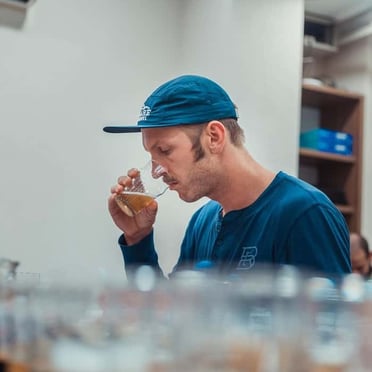
“You can step on the gas and put everything you’ve got into getting the business launched, and your business needs that,” says Wallash. “But at the same time you have to… manage your own well-being because if you give everything you’ve got to drive things forward, you’ll eventually burn out. It might not be this year or next year. It might be in five years. But you have to balance yourself and your business.”
Wallash would know. He spent the first two years at The Rare Barrel working sixty- to eighty-hour weeks, drank a lot of coffee, didn’t sleep well, and didn’t work out. It caught up to him.
“It got to a point where cognitively I got slower,” he says. “I had to step back from eighty to forty hours a week and prioritize and delegate responsibility to other people, trust other people, and train other people.”
Much like Tabatabai brought in Whistler to help her scale up her recipes, Wallash started hiring a team around him to help. Recently, he started systematizing and writing down standard operating procedures for his team. This way, anyone at any point can step into a role and help fill a hole. And most importantly, Wallash doesn’t have to worry about doing everything.
“It’s important to keep checking in on yourself in terms of what you’re good at and what your role is in the company. If you don't set up those boundaries and choose when something makes sense for you as the entrepreneur versus hiring someone skilled to do it, it can be really easy to spread yourself thin,” says Wallash. “And then who will pay attention to the vision and the future of the company? Who will be the entrepreneur that the company still needs?”
Wallash says it’s something he works on everyday. But a practice that is so essential.
“When I go to do something, am I doing this because it needs to be done? Am I doing it because it is the best thing for my time? Is it because I’m the best person at the company to do this? I’m constantly evaluating those questions… because you can’t do it all. It’s just not possible.”
Get Ready for the Red Tape
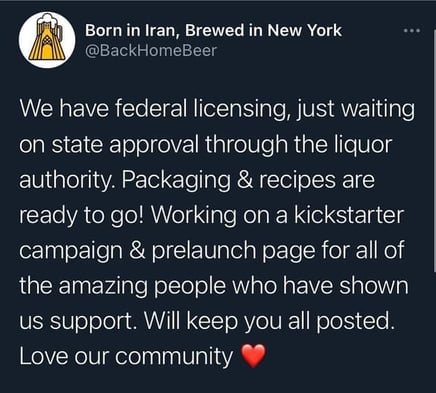
Benjamin Franklin famously said, “In this world nothing can be said to be certain, except death and taxes.”
Well, if you’re a brewery owner, you can add permits and licensing to that list.
“You don’t just receive your first license and you’re good to go,” says Tabatabai. “No -- then you have to get each of your labels approved federally and at the state level. You have to make sure, if you’re self-distributing, you have the proper license for your care. It’s not just one license. Every part of the process requires another license.”
Understand that as you open your brewery, you’ll run into things that are mostly out of your control. For this reason, Tabatabai recommends giving yourself plenty of time before you brew your first beer to apply for everything and to have it approved.
“I was waiting on some things while my beer was in the tank and I had so much anxiety over if I’m going to get approval before this beer is packaged.” says Tabatabai. Luckily, her approval came through two days before the beer was ready, but if she had known how long it would take, Tabatabai says she would have applied much sooner.
Wallash agrees. “All these projects, in particular construction, will take twice as long as you think and probably cost twice as much,” he says.
Please be advised: We are not lawyers. This is just a jumping-off point. Please consult legal advice and refer to the Tax and Trade Bureau for Alcohol and Tobacco, your local ABC Board, and the Brewers Association State Laws for more assistance on the exact permits, insurance, and licenses you’ll need to obtain in your specific area.
Start a Brewery Instagram
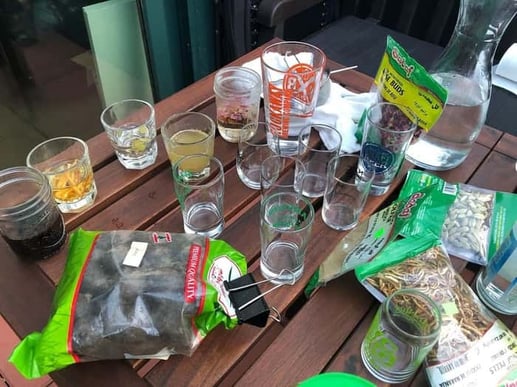
One thing that won’t cost you a thing is marketing through social media. If you’re thinking about opening a brewery, you should start an Instagram and Facebook page for your business before the doors open. Otherwise, you’ll be behind the eight ball on building and advertising your brand.
Tabatabai didn’t even have personal social media pages before starting @backhomebeer on Instagram to “allow people to come on the journey with us,” she says. That included posting about when she received different licenses, experimented with R&D, or brewed test batches. “People felt more connected with the brand,” says Tabatabai. “It’s important not to wait until brewing to get the word out. You can say, ‘Hey guys, this is what I’m doing and I want you to be a part of the process.”
Tabatabai firmly believes that building this foundation from the beginning directly translated to the success of her first can run in mid-October 2021.
“A lot of people felt a connection to the beer and the packaging. They went out and supported me and I was really happy about it,” says Tabatabai.
And it’s all because she started letting people double tap before brewing a single beer. So before you think about scaling up your recipes or brewing a single beer, you should start building your brand's social media presence.
Scale Up Your Homebrewing Recipes
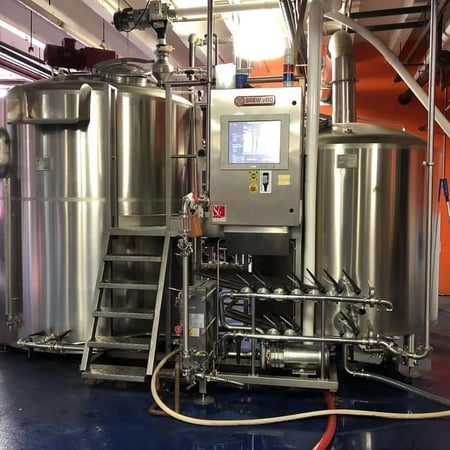
Of course, you can’t become a professional brewer or brewery owner without making beer.
However, the fact that scaling up your recipes is the seventh step on this list should say something. As we’ve mentioned before, there are plenty of things to consider first before even getting into these technical details.
Unfortunately, there’s no secret recipe (pun intended) to scaling up your homebrewing creations to perform on professional equipment. But overall, you need to dial in a specific set of instructions.
“When I was homebrewing, I was not being technical with my recipes,” says Tabatabai. “I would just throw in stuff, taste it, throw in a little more. [But professionally,] you have to be extremely technical. Even when you scale up recipes, they still won’t taste exactly like you made them at home. At least not the first couple of times.”
It’s difficult. Plus, since Tabatabai contract brews, her and Whistler had to get comfortable with new equipment they’d never brewed on before.
“It’s one thing to scale, but it’s another thing to realize that, even when you scale, every system is a little different,” says Tabatabai.
Additionally, Tabatabai’s first beer, called Sumac Gose, includes curried sumac, blue salt, and tart cherry. These are ingredients you’ll typically find in the Middle East, but not necessarily in the US. However, they’re essential to the identity of Back Home Beer, which brings us to our next step...
Stay True to Your Brewery Brand

Back Home Beer focuses on creating beer that’s inspired and influenced by many of the different flavors of the Middle East. Tabatabai, the daughter of Iranian immigrants whose grandfather homebrewed in Iran in the 1950s and ‘60s, started Back Home Beer to share the rich history of brewing in Iran.
From the beginning, Tabatabai started homebrewing her grandfather’s old recipes. He used a lot of ingredients from his garden in Shiraz, Iran: sumac, salt, barberries, and dried limes.
Tabatabai chose to release her Sumac Gose first because all of those unique ingredients tell a distinct story.
“In Iran, sour cherries grow like crazy,” she says. “They’re a popular flavor and fruit. They make a lot of different dishes with sour cherries, but mostly they're just eaten with salt. And some people put sumac on it. My grandfather also brewed a lot with sumac, so that’s when I had the idea to do a gose with this beer.”
Bringing Iranian ingredients and heritage to her beers adds a layer of complexity to Back Home Beer and gives the brand a distinct identity that’s crucial to Tabatabai’s ethos.
“It’s important for me to stay true to the brand and what I want to do,” says Tabatabai. “For people who want to come out with a beer, they should stay true to themselves and what they’re doing. I think that people respond really well to that and the story.”
With that in mind, Tabatabai worked with a young woman in Iran to design the labels for her cans.
And drinkers have responded to her narrative. Despite the challenges with ingredients and contract brewing, Tabatabai’s Sumac Gose debuted in mid-October to rave fanfare. It sold out from the shelves of many accounts within just a few hours.
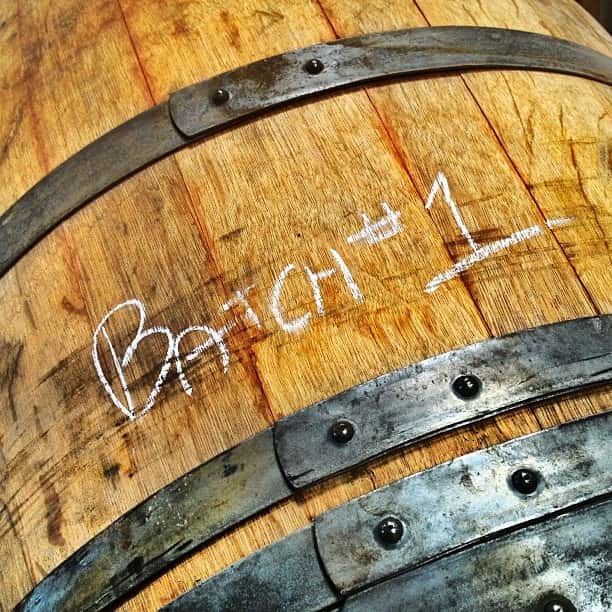
Similarly, when Wallash and Goodwin started The Rare Barrel in 2012, they launched with Skus Me, a golden sour aged in oak barrels. The all-sour and barrel-aged beer brewery has operated in a pretty niche category for almost ten years. Through the proliferation of hazy IPAs and adjunct-packed pastry stouts, The Rare Barrel has stayed true to its roots.
Chances are, if you’re starting a brewery, you have a unique point of view and mission. Whether that’s bringing your heritage and culture into the beer, brewing one type of beer, or becoming the community hub in your neighborhood, you need to stick to your brand identity.
A Final Word

Opening a brewery is a lot of work. It’s much more complicated than going down to your basement for a brew day. You have to develop an idea, get some experience or understand your limits and hire the right people, apply for the right permits and licenses, develop a brand presence, scale up your recipes, the list goes on and on.
But despite all these hurdles, the hops are worth the boil.
“Everything changed that day we first opened,” says Wallash, who noted that way more people showed up for the bottle release than he expected. “There was a huge shift in how I felt, a shift from always planning to doing. It was a huge release… a physical release of the anticipation that I’d been holding onto for years of planning.”
When Tabatabai finally released Sumac Gose after almost two years of work, she says, “It was amazing. It made all the headaches of the last couple years worth it. To be able to see people leaving their houses, getting on a train, going to the stores that had our beer just to get a few cans, especially the fact that almost every store we dropped in last week sold out within a few hours, it was unreal.”
Unlock Your Beer and Beverage Potential!
Untappd for Business can help increase your revenue while providing powerful insight and analytics about what your guests are drinking locally.
Get started by scheduling a demo with one of our experts or start a free 7 day trial - no credit card required!
